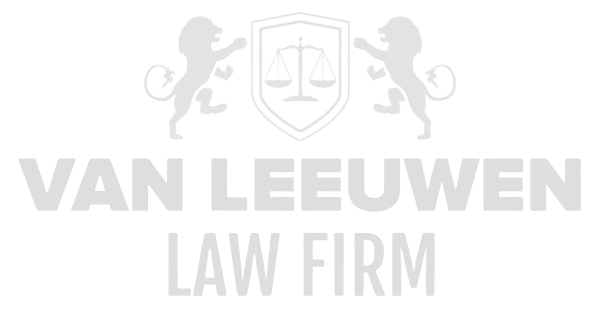Maintaining a professional and proactive relationship with the Dutch Data Protection Authority (Autoriteit Persoonsgegevens, AP) is essential for demonstrating that an organization takes the ‘accountability’ principle of the General Data Protection Regulation (GDPR) seriously. The AP acts as a regulator, enforcer, and sounding board, and can perform various roles: from formal investigations and imposing fines to advisory meetings and informal discussions. A structured approach ensures that requests for information are answered in a timely, accurate, and complete manner, and that investigations proceed smoothly, maintaining trust and minimizing disruption to business operations.
A robust framework for interacting with the AP not only includes reactive procedures when a request or investigation arises but also proactive preparations: building a solid documentation base, conducting periodic internal audits, and training key personnel. By making both legal and operational teams aware of the AP’s roles, deadlines, and expectations, an organizational culture is developed that is not afraid of oversight, but rather anticipates it. The following paragraphs describe in detail how requests for information, formal investigations, and informal discussions can be optimally managed.
Preparation and Internal Organization
The starting point for any interaction with the AP is the appointment of a clear point of contact, such as the Data Protection Officer (DPO) or a specially designated AP coordinator. This person is responsible for receiving, monitoring, and initially assessing any request from the regulator. A contact list with escalation routes and backup schedules ensures that responses can be made quickly even in the absence of key personnel.
Next, an ‘AP file structure’ is set up where all correspondence, internal memos, and relevant policy documents are gathered and archived. This file includes, among other things, records of processing activities, Data Protection Impact Assessments (DPIAs), data breach reports, and audit reports. Having this information readily available ensures that a complete and consistent response can be formulated within the legal deadlines (usually four weeks) when a request for information is made.
Additionally, a periodic training program for involved teams is crucial. Legal advisors, IT administrators, and senior management are trained in the AP’s formal expectations, procedures for providing information, and handling confidential data. Scenario exercises, such as tabletop simulations of an AP investigation, enhance preparedness and reduce the element of surprise during an actual enforcement process.
Responding to Requests for Information
When the AP makes a request for information or documents, such as a questionnaire or a letter with specific questions, a formal acknowledgment must be sent within the specified time frame. This signals respect for the procedure and buys additional time for internal coordination. At the same time, an internal response team is formed to gather all requested information.
The response team follows a detailed checklist: which documentation is relevant, who is responsible for providing which materials, and what additional context needs to be included? Legal counsel reviews the completeness and accuracy of the responses, while IT colleagues prepare technical appendices or log extracts. Each attachment is briefly explained with a summary note so the AP can immediately see how the documents support the response.
After internal approval, the coordinator sends the package to the AP, preferably via secure channels in accordance with the AP’s guidelines. The covering letter also provides contact points for follow-up questions and expresses willingness to provide further clarification. This open approach contributes to a constructive dialogue and reduces the risk of additional requests or formal sanctions.
Guiding Formal Investigations
In a formal investigation or enforcement procedure, the AP often includes extensive case materials and may schedule additional interviews. Before this stage, a detailed ‘field document’ is prepared, outlining the legal nuances of ongoing processing, previous DPIA reports, and internal audit findings. This serves as the guide for both the organization and external lawyers or counsel.
During the investigation, employees may be called by the AP for questioning or clarification. Mock interviews are conducted in advance, training employees to respond clearly and factually to questions and to avoid speculative statements. Only authorized spokespersons, such as the DPO or senior legal advisors, should represent the organization to ensure consistency and quality of the responses.
After the investigation concludes, the organization typically receives a draft enforcement decision or report. A formal statement of objections follows, where the findings are contested or nuanced. This resistance document is based on detailed factual and legal analyses, supported by expert reports if necessary. A timely, well-founded statement of objections can lead to the mitigation of measures or the cancellation of fines.
Oral Hearings and Audits
Sometimes, the AP invites the organization to an oral hearing or ‘hearing’, for example, in complex cases or to impose administrative fines. Preparation for this requires intensive interdisciplinary collaboration: legal teams prepare pleadings, IT experts prepare technical demonstrations or evidence, and communication advisors practice with the spokesperson.
During the hearing, a strict role distribution is applied: a lawyer leads the plea phase, a technical expert answers in-depth questions about systems, and a compliance officer can explain the process improvements implemented since the initial request. This coordinated approach demonstrates the organization’s serious commitment and can convince the AP of its ongoing efforts toward improvement.
After the hearing, a report is drawn up of the findings and official statements. A follow-up plan is also formalized, detailing all commitments, audit measures, and any remedial actions, including responsible parties and deadlines. This report serves as the basis for further dialogue with the AP and internal evaluation.
Continuous Improvement and Strategic Collaboration
The completion of each interaction with the AP provides valuable insights. A ‘lessons learned’ session with all involved – from the DPO to IT management and senior leadership – identifies strengths in existing procedures and potential bottlenecks that led to vague or incomplete responses. These insights are incorporated into an improvement plan for future readiness.
A strategic partnership with the AP can also be proactively developed: participating in consultation rounds, providing feedback on policy proposals, or sharing best practices through industry organizations. As part of the Privacy Data Framework, the organization’s external engagement plan includes structured participation in forums, roundtable discussions, and approved preliminary meetings with the AP.
By not viewing oversight merely as a threat but as an opportunity for dialogue and quality improvement, trust from both the regulator and internal stakeholders grows. A transparent, consistent, and strategic approach to interacting with the AP forms part of a mature Privacy Data and Cybersecurity Framework that continues to evolve and optimize.










